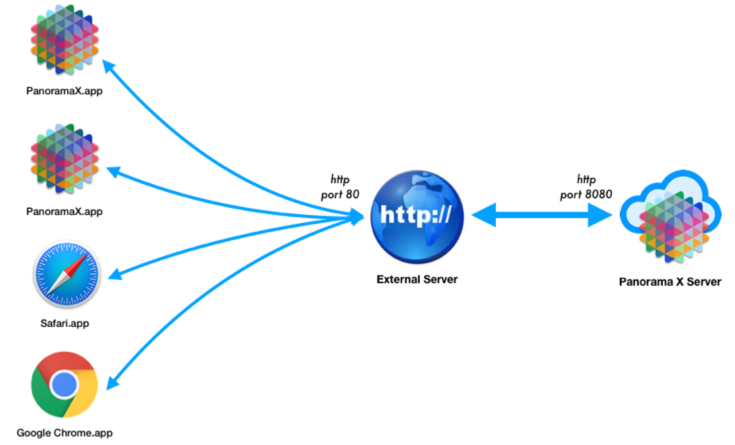
WebSocket allows you to send files or applications across the Internet. This protocol has several components: a structure, functions, and security. You can also use extensions and your own data formats. Find out more about these features.
Structure
WebSocket allows an application to send and get messages from another application. It is added to the TCP and UDP transport layer protocols. It also allows for message retrying or disconnection. It works with two types message, the control message as well as the connection.
Each frame contains payload data. The connection data is framed together with the payload supplied by the application. However, the base WebSocket specification does not support data compression, so applications must implement their own data compression logic. Data compression extensions are the equivalent to HTTP transfer-encoding negotiations. These extensions may be advertised in Upgrade handshake. The server can then select them for the duration of the connection.

Functions
Websocket functions enable you to send or receive messages from a web server. To send a message you must first create the socket connection within your application. Then, you must create an event listener that will be called whenever a new message arrives on the server. Then, you can use the WebSocket function to respond to the message.
WebSocket allows you to send and receive data from two devices. It allows both the client and server to send and receive messages simultaneously. WebSockets are especially useful for retrieving data from servers. This is not possible through HTTP requests. WebSocket will allow the server to verify the order and process the request.
Security
WebSocket protection is an extension to WebSocket protocol. This inspects WebSocket connectivity and secures data transferred through them. WebSocket security can be enabled or disabled for a Web application or website. A default WebSocket profile for a website or web application is created when enabled. This profile has a status of OFF, which means that the service is not active. Also, the browser automatically adds its cookies the WebSocket handshake request. This means that attackers have access to victim's credentials.
WebSocket Security is quite simple to set up and can be accomplished in just a few steps. First, verify that the "Origin” header on the websocket connections matches. If the header is not identical, the WebSocket connections will be closed. Second, be sure to check the message's frame format. And third, make sure that the connection is being made over an SSL channel. Otherwise, information could leak out and other attack vectors may occur.

Extensions
Websocket extensions refer to a set parameters that the server returns to the client. These are specified in the "Sec-WebSocket-Extensions" header and must be implemented by both the client and the server. The server activates the extensions and returns them to the client.
The websocket extension library is used to implement websocket extensions. This library, which is independent of the main protocol defines abstractions for frames and messages. It implements several APIs that allow plugins and drivers interoperate.
FAQ
What is a static web site?
A static website contains all content stored on a server that visitors can access via web browsers.
The term "static" refers to the fact that there are no dynamic features such as changing images, video, animation, etc.
This type of website was originally created for use in corporate intranets. It has since been adopted both by individuals and small companies who are looking for simple websites that do not require any programming.
Static websites are becoming more popular due to their ease of maintenance. Static sites are easier to maintain and update than fully-featured websites with multiple components (such as blogs).
They also tend to load faster than their dynamic counterparts. This makes them perfect for users who are using mobile devices or have slow Internet access.
In addition, static sites are more secure than their dynamic equivalents. A static website is impossible to hack. Hackers only have access to the data that resides inside a database.
There are two main methods to create static websites:
-
A Content Management System (CMS),
-
Creating a Static HTML Website
Which one is best for you depends on your needs. A CMS is a good choice if you are new to website creation.
Why? Because it allows you to have full control over your website. With a CMS, you don't need to hire someone to help you set up your site. Upload files to the web server.
You can still learn to code and make a static website. You will need to spend some time learning to program.
What Websites should I make?
This depends on your goals. If you are looking to build a business from your website, it may be beneficial to focus on selling online products. This will require you to set up a strong eCommerce site.
Blogs, portfolios, forums, and other types of websites are also popular. Each type of website requires different skills. For instance, if you want to set up a blog, you will need to learn about blogging platforms such as WordPress or Blogger.
You must decide how to personalize your site's appearance when choosing a platform. There are many templates and themes available that can be used for free on each platform.
Once you've chosen a platform, you can build your website by adding content. Images, videos, text, and other media can all be added to your pages.
Once you're ready to publish your website online, click here. Visitors can access your website in their browsers once it is published.
Which platform is best for designing a website?
WordPress is the best platform available for building a website. WordPress offers all the features needed to make a website professional looking.
Themes can be easily customized and installed. There are thousands of themes online that you can choose from.
Plugins allow you to add functionality, such as adding social media buttons or creating contact pages.
WordPress is extremely user-friendly. To modify your theme files, you don't need to be able to code HTML. Simply click on an icon, and then select what you want.
There are many options, but WordPress is the best. Millions of people use it every day.
How to design a website?
It is important to first understand your customers and what your website should do for them. What are they looking at when they visit your site.
What kind of problems can they have if they cannot find what they want on your site?
You now need to know how to fix the problems. Make sure everything looks good on your website. It should be easy to use and navigate.
You should have a well-designed website. It should not take too much time to load. People won't stay as long if it takes too long to load. They'll leave and go elsewhere.
When you are building an eCommerce site, it is important to consider where all your products are located. Are they all located in the same location? Are they in one location?
It's important to decide if you want to sell just one product or multiple products. Do you want to sell just one type of product or multiple kinds?
When you answer these questions, your site can be built.
Now it is time for you to concentrate on the technical aspect of things. How will your site work? Will it run fast enough? Can people get to it quickly from their computers?
Are people able to purchase something without paying extra? Do they need to register with you before they can purchase anything?
These are essential questions that you need to ask yourself. These are the questions that you need to answer in order to be able move forward.
Statistics
- In fact, according to Color Matters, a signature color can boost brand recognition by 80%. There's a lot of psychology behind people's perception of color, so it's important to understand how it's used with your industry. (websitebuilderexpert.com)
- It's estimated that chatbots could reduce this by 30%. Gone are the days when chatbots were mere gimmicks – now, they're becoming ever more essential to customer-facing services. (websitebuilderexpert.com)
- Is your web design optimized for mobile? Over 50% of internet users browse websites using a mobile device. (wix.com)
- It's estimated that in 2022, over 2.14 billion people will purchase goods and services online. (wix.com)
- Studies show that 77% of satisfied customers will recommend your business or service to a friend after having a positive experience. (wix.com)
External Links
How To
What is Website Hosting?
Website hosting is the place where visitors go to visit a website. There are two types:
-
Shared hosting is the cheapest. Your website files are stored on a server that is owned by another person. Your customers' requests travel via the Internet to your server when they visit your site. You then receive the request from the owner of the server.
-
Dedicated hosting is the most expensive option. Your website is only accessible from one server. Your traffic is private because no other websites have shared space on this server.
Because shared hosting is more affordable than dedicated hosting, most businesses opt for it. With shared hosting, the company that owns the server provides the resources needed to run your website.
There are pros and disadvantages to each option. Here are the differences:
Shared Hosting Pros:
-
Lower Cost
-
Easy to Setup
-
Frequent Updates
-
It can be found at many web hosting providers
Hosting shared with others can cost as low as $10/month. But keep in mind that this price usually includes bandwidth. Bandwidth refers the data that you can transfer over the Internet. You may have to pay extra for large amounts of data, even if your blog only contains photos.
You'll soon realize why your old host cost so much once you get started. Most shared hosts provide very limited customer support. While they may occasionally assist you in setting up your site and other tasks, after that you are all on your own.
A provider with 24-hour telephone support is a good choice. They will take care of any issues while you sleep.
Hosting dedicated:
-
More Expensive
-
Less common
-
Requires specific skills
With dedicated hosting, you get everything you need to run your website. You won’t need to worry whether you have enough bandwidth or enough RAM (random address memory).
This means you will need to spend more upfront. However, once your business goes online, you'll discover that you don’t need as much technical support. You'll quickly become an expert at managing your server.
Which Is Better for My Business?
It all depends on the type of website you are creating. If you are selling products, shared hosting may be the best option. It is simple to set up and easy to maintain. Because you share a server, you will most likely receive frequent updates.
However, dedicated web hosting is the best way to build a community around you brand. It allows you to focus on building your brand and not worrying about managing your traffic.
If you're looking for a web host that offers both options, we recommend Bluehost.com. They offer unlimited monthly data transfers and 24/7 support. You can also register domain names for free.